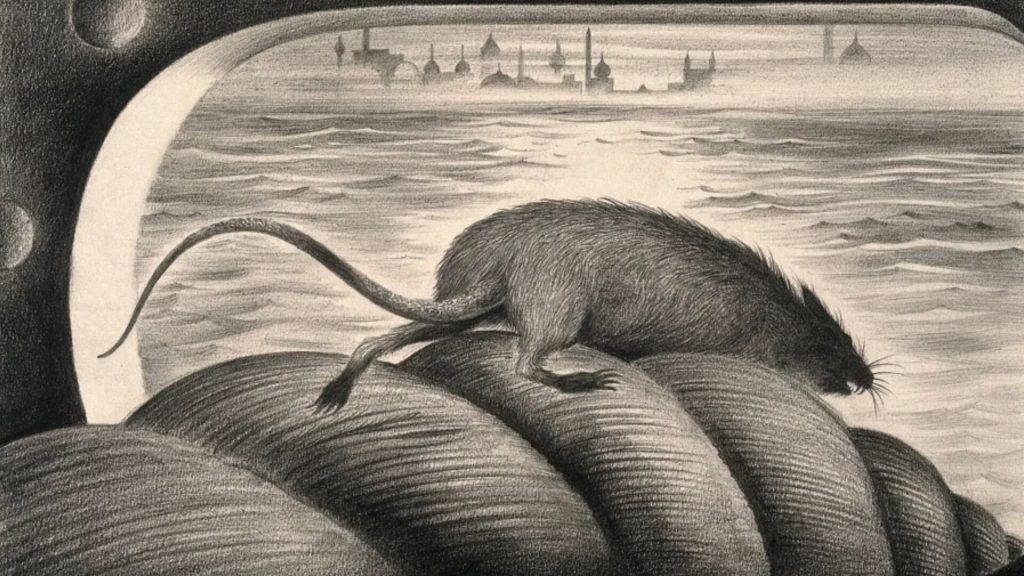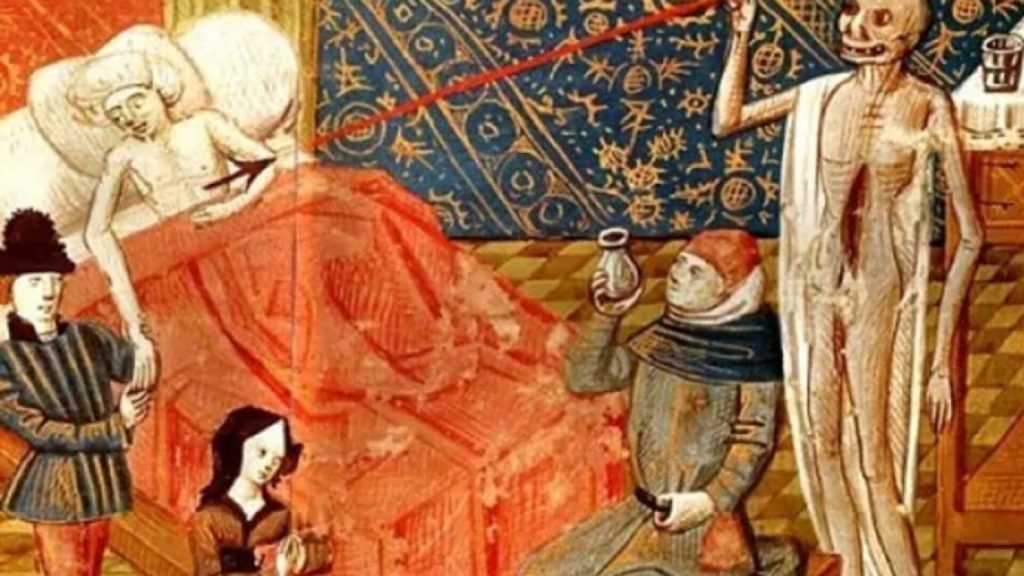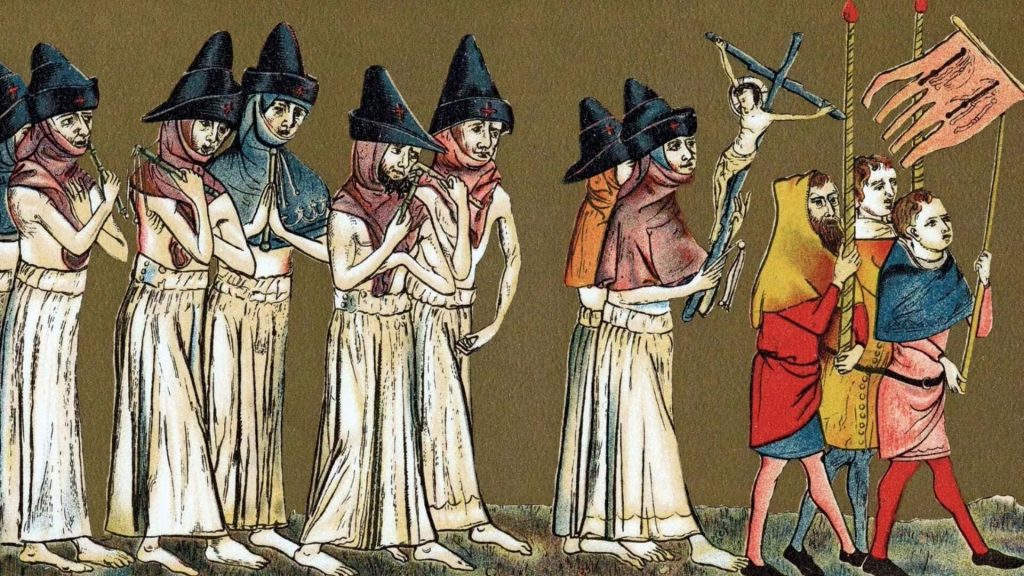Just a few weeks ago, a man in Oregon was diagnosed with the bubonic plague. Since the world is still reeling from the recent Covid pandemic, it is understandable that the thought of deadly disease sweeping through the population is terrifying.
The bubonic plague, also called the Black Death, devastated medieval Europe and killed millions of people. Does this recent case in Oregon mean that the Black Death is back? Not at all. In reality, the bubonic plague never went away. As we will see, the recent case of the plague in Oregon isn’t an omen of an impending pandemic.
A Rural Oregonian and his Cat
The Oregon man, a resident of rural Deschutes County, was, according to health officials, infected with the bubonic plague which was transmitted to him by his pet cat. According to the Deschutes County health officer, Richard Fawcett, the cat exhibited signs of a “fairly substantial infection.”

The cat, Fawcett explained, had a draining abscess which put the pet owner in contact with infected bodily fluids. This isn’t the only way the plague is passed from animal to human. A common form of transmission is flea bites that pass the disease from an infected animal, usually a rodent, to a human. The cat probably had contact with both mice and fleas.
Is the Black Death a Death Sentence?
Despite its ominous-sounding nickname, the Black Death is no longer the death sentence that it was 600-plus years ago. According to Fawcett, the patient “responded very well to antibiotic treatment.”

As a precaution, all of the man’s close contacts were also provided medication. So far, none of them have shown symptoms of the bubonic plague. The infected cat was also treated for the disease, but sadly, its outcome was not so positive. The Black Death claimed the cat.
Cases of the Plague Are Reported Every Year
This recent incident of the bubonic plague marks the first case of the Black Death in Oregon in nine years. On average, the Centers for Disease Control records seven cases of the bubonic plague every year in the United States … a statement that shocks many people.

In the last several decades, the majority of plague cases were reported in New Mexico. In fact, the disease seems clustered in a region of northern New Mexico, northern Arizona, and southern Colorado, or in a region of northern California, southern Oregon, and western Nevada.
Hasn’t the Bubonic Plague Been Eradicated?
Knowing how rapidly the bubonic plague spreads and how deadly it is would make you think that modern science has eradicated the Black Death, but that is not the case. Although the disease has been extensively studied, it has not been eliminated.

As Dr. Don Barouch, the director of the Center for Virology and Vaccine Research at Beth Israel Deaconess Medical Center in Boston, explained, “The reason why it hasn’t been eliminated is because there’s an animal reservoir.”
“We Can’t Treat All Animals in the Wild“
As Dr. Barouch noted, the bubonic plague is caused by the Yersinia pestis bacterium. “The bacteria can infect animals, and because we can’t treat all animals in the wild, it persists in nature and thus occasionally causes a limited number of human cases,” he added.

Fleas are the vectors that carry the Yersinia pestis bacterium from one living animal to another. Most often, the bacteria stays in the wild … a flea spreads the disease from a mouse, for example, to a squirrel.
Pets, Pests, and the Plague
Just as the incident in Oregon shows us, when our pets get involved in the equation, it increases the chances of the disease passing to humans. Our pets are susceptible to flea bites, especially if they spend time outdoors. As natural hunters, cats often come into contact with small rodents.

To protect yourself and your pet, experts recommend that you use flea-control medications or products on your pets. They also suggest that you try to prevent your pets from hunting rodents, although this is easier said than done. The previous bubonic plague case in Oregon that occurred nine years ago was the result of a homeowner trying to wrestle a mouse away from his cat.
Is It the Flu? Or, the Bubonic Plague?
Symptoms of the bubonic plague start out nearly identical to the symptoms of influenza and even Covid. People experience fever, chills, headaches, fatigue, weakness, and painfully swollen lymph nodes, according to the CDC.

The onset of symptoms is usually two to eight days after the person has been infected. If left untreated, the disease can spread to the patient’s lungs and bloodstream. At this point, the bubonic plague becomes harder to treat and more easily spread from human to human.
Cover Your Mouth When You Cough
According to the World Health Organization, when a person contracts the bubonic plague through a bite, the Yersinia pestis bacterium invades the nearest lymph node, which becomes inflamed. The disease is not contagious at this point.

According to Fawcett, if the patient develops a cough, it could potentially mean the disease has progressed into pneumonic plague. The bacteria can be transmitted from person to person when the infected person coughs. When the disease progresses into pneumonic plague, it is much more deadly.
Highly Treatable
As reported by the CDC, of the most recent cases of the bubonic plague in the United States, more than 80-percent of the time, the disease remained confined to the lymph nodes. Since 2020, nine cases have been reported. Two of those cases resulted in the patients’ deaths, in part because they did not seek prompt medical treatment.

The two most commonly prescribed antibiotics to treat the bubonic plague are fluoroquinolones and gentamicin. “Now, it’s a very treatable disease,” said Dr. Harish Moorjani, an infectious disease specialist at Northwell Health in Westchester County, New York. “It shouldn’t create the fear that people had in the Middle Ages of the Black Death.”
The Origin of the Black Death in Europe
In October 1347, a dozen ships from Asia arrived in Sicily at the port of Messina. People gathered at the docks, as they typically do, to greet the sailors, but this time, there were no happy reunions. Instead, the people of Messina found a ghastly sight.

Almost all of the sailors on the ships were dead. The few who were still alive were terribly sick. They were weak, coughing, and covered with repulsive black boils and sores with pus and blood seeping from them. Authorities at the port acted quickly. They ordered the ships to leave port immediately, but it was too late.
The Plague Spread Quickly
Within days, people in Messina fell ill. The bubonic plague quickly spread to other port cities … in France, North Africa, and Italy. By early 1348, the plague reached Rome, London, and Florence.

Today, we know that it was rats aboard ships that carried the Black Death from port to port and beyond. Since they didn’t understand how the disease spread, the people of medieval Europe were powerless to stop the spread.
A Truly Awful Fate
Italian poet Giovanni Boccaccio wrote of the Black Death that “at the beginning of the malady, certain swellings either on the groin or under the armpits … waxed to the bigness of a common apple, others to the size of an egg … these vulgar named plague-boils.”

We now know that Boccaccio was describing the swollen lymph nodes. After the bacteria invaded the lymphatic system, the patient experienced fever, chills, diarrhea, vomiting, body aches, and excruciating headaches. The patient died within days … sometimes hours.
Plague Doctors and Ineffective Remedies
The people of medieval Europe had never encountered anything like this before. Physicians had no idea how to treat this deadly and terrifying disease. Often, their remedies were as appalling as the illness itself.

For example, plague doctors practiced bloodletting and boil lancing. These were as ineffective as they were dangerous. Patients often died of dehydration because doctors advised them not to drink water. The plague doctors also tried burning herbs to fumigate homes, applying vinegar to the boils, and asking the patient to pray harder to cure them of the bubonic plague.
Practicing Social Distancing
Many people took extreme steps to avoid contact with stricken people, which was probably the most proactive thing they could do. People fled the crowded cities and isolated themselves in the countryside. Shopkeepers and priests refused to see people.

Most heartbreaking of all were the stories of people who abandoned their sick loved ones to die alone in an effort to save themselves.
How Deadly Was the Black Death?
The bubonic plague pandemic of 1346 to 1353 was one of the deadliest disease outbreaks in human history. In a five-year span, an estimated 20 to 50 million people in Europe alone died from the Black Death.

This is a staggering number of victims, but when we look at the population of 14th century Europe, the death toll is even more profound. The Black Death claimed between one-third and one-half of the population of Europe.
Why Was It So Deadly?
Experts today call the bubonic plague “highly treatable”, so why was it so much worse six centuries ago? As David Wagner, the director of the Biodefense and Disease Ecology Center at the Pathogen and Microbiome Institute of Northern Arizona University, explained, “It’s the same thing that caused the Black Death, but that was in the pre-antibiotic era.”

“Now it’s very easily treated with simple antibiotics,” Wagner added. On top of that, the poor sanitation and personal hygiene of the Middle Ages contributed to the spread of the bubonic plague. The medieval era also had a notable pest problem. Mice and rats moving though the cities passed the bacteria to humans.
The Black Death Pandemic Ended, but the Disease Didn’t Go Away
After five years, the bubonic plague eased. Every few years, the disease threatened to return, but people learned how to mitigate the spread. For example, sailors and their ships were required to anchor for 40 days – a quarantine – before entering a port. Public sanitation improved and homes were built more securely to keep rodents from moving in.

It was the introduction of antibiotics, however, that was the real game-changer. The Yersinia pestis bacterium can be combated with a dose of antibiotics. Today, we don’t need to quake in our boots at the thought of the Black Death returning. It is already here. It never left. And, it is rarely deadly these days.






